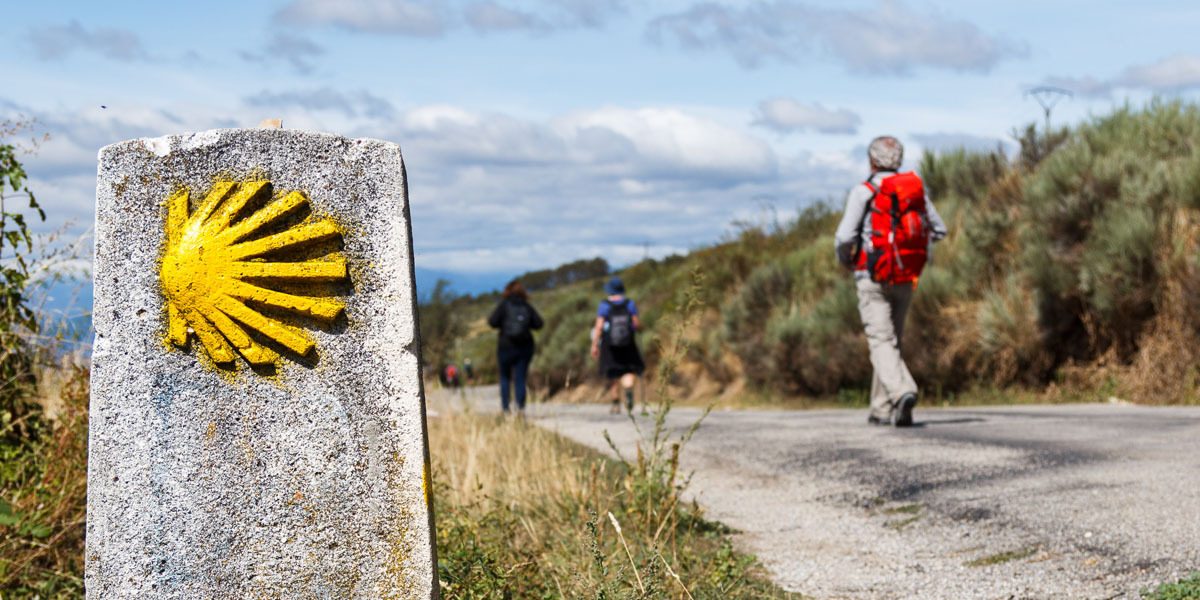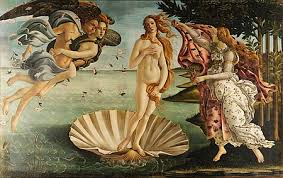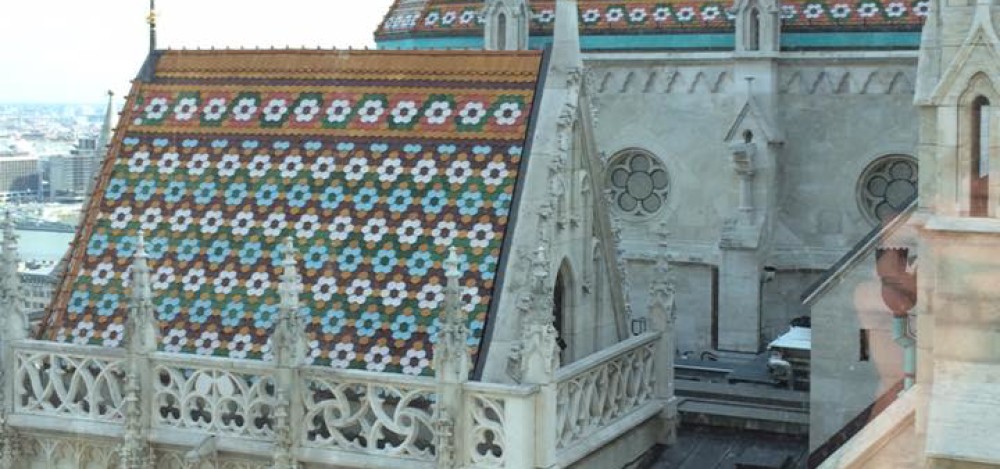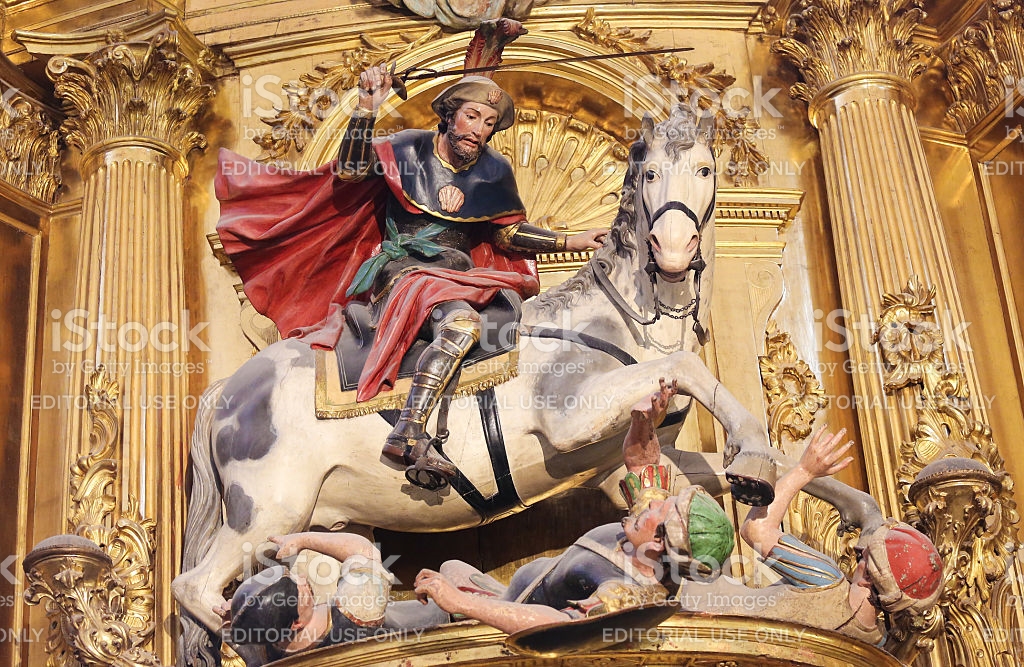
A scallop shell marks the pilgrimage route to Santiago.
The scallop shell is the traditional emblem of St James the Great and is popular with pilgrims returning from the Way of St James (Camino de Santiago) and the apostle’s shrine at Santiago de Compostela in Galicia, Spain. Medieval Christians would collect a scallop shell while at Compostela as evidence of having made the journey. The association of Saint James with the scallop can most likely be traced to the legend that the apostle once rescued a knight covered in scallops. An alternative version of the legend holds that while St. James’ remains were being transported to Galicia (Spain) from Jerusalem, the horse of a knight fell into the water, and emerged covered in the shells.
In French the animal (as well as a popular meal of it in cream sauce) is called coquille St. Jacques. In German, they are Jakobsmuscheln – literally “James’ mussels”. When referring to St James, a scallop shell is displayed with its convex outer surface showing. In contrast, when the shell refers to the goddess Venus (who stepped out from the sea on a scallop shell), it is displayed with its concave interior surface showing.

Sandro Botticelli, The Birth of Venus (c. 1484-86). Tempera on canvas. Uffizi, Florence

